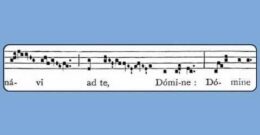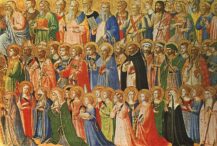There can be as few as 23 and as many as 28 Sundays after Pentecost. It all depends, of course, on the date of Easter, which can vary by as much as 5 weeks. This year, as it turns out, there were 26 Sundays after Pentecost, and this was the 26th, and thus the last. Regardless how many there are, the Mass said for the last of these Sundays is always the same, and it is referred to in missals as Dominica XXIV et ultima post Pentcosten, or the 24th and Last Sunday after Pentecost.
The five propers sung by the Schola for the Mass of the Last Sunday after Pentecost (Introit, Gradual, Alleluia, Offertory, and Communion) are taken from the 23rd Sunday after Pentecost.
As a simple Sunday after Pentecost, the Sunday was a second-class feast, thus Father and the altar were wearing green, and so, we sang Mass IV (for Ordinary Feasts). And as is usually the case, we paired that with Credo IV.
According to the cycle of Sundays (the Temporal Cycle), this was the last Sunday after Pentecost. According to the calendar date (from the Sanctoral Cycle), this date, November 21st, is the feast of the Presentation of the Blessed Virgin Mary in the Temple. In many cultures, this feast (which was added to the Church’s calendar before the feast of the Holy Name of Mary was added), is celebrated as the name day of those named Mary. Thus, we chose as the processional hymn, I’ll Sing a Hymn to Mary, which twice promises to love and bless the name of Mary.
At the Offertory, we once again implored Our Lady for relief from the current pestilence, singing Stella Coeli Extirpavit.
At the Communion, with the Holy Souls in mind, the mixed choir sang Francis X. Witt’s setting of the De Profundis. Given the limited remaining time, the schola managed two verses of Languentibus in Purgatorio.
And at the recessional, again, with the Holy Souls in mine, we sang Help, Lord, the Souls.
Finally, to conclude, the schola sang the simple Gregorian setting of the Salve Regina.









